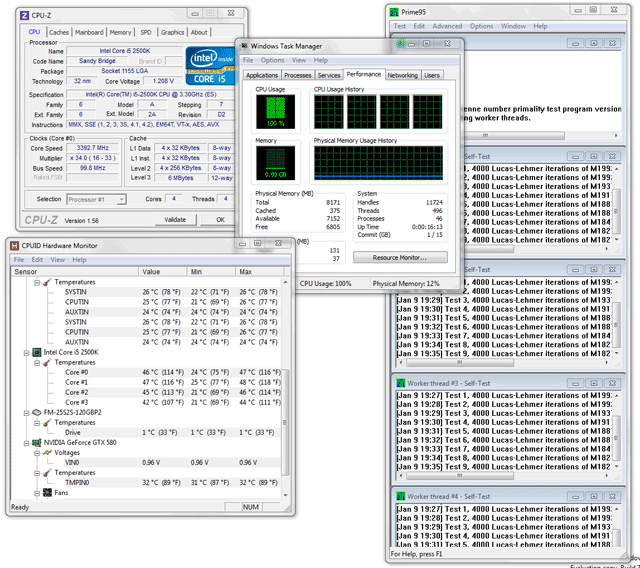Sandy Bridge Power Consumption and temperatures
Sandy Bridge Power Consumption and temperatures
Here's where we'll slowly move into physically testing the processors and respective chipsets.
The new Sandy Bridge based processors are a bit of a redesign alright and as a result they are quite energy friendly processors. What you'll notice a lot is that in idle these things kick ass in matters of power consumption, whereas at peak TDP they behave quite normally.
A processor like the Core i5 2500K for example consumes only 106 Watts, and that is with all cores stressed, and that's including an H67 chipset, one solid state drive, the memory and active cooler, no dedicated graphics card. Once that processor goes into an IDLE state (and again -- without a dedicated graphics card) we measure merely 34 Watts IDLE power consumption. And that's just crazy.
Unfortunately, once you insert a dedicated graphics card things change quickly. When we add a GeForce GTX 580 for example that IDLE power consumption jumps upwards to roughly 63 Watts with a wattage peak of 134W with the four processor cores stressed. That's still really good though.
The 2600K processor is slightly above these values, but what we wanted to show you as well is of course power consumption once overclocked. So we applied a CPU voltage of 1.3V to the processor, apply an overclock to 4300 MHz (on all CPU cores) and again stress the four CPU cores, power consumption now rises to just under 180W. And as crazy as that sounds... it's really low for an overclock at this level. So that is just really good news.

Temperatures wise both the 2500 and 2600 processors are roughly the same. The results above are based on the reference motherboards, reference clock frequencies and the reference stock Intel CPU cooler.
